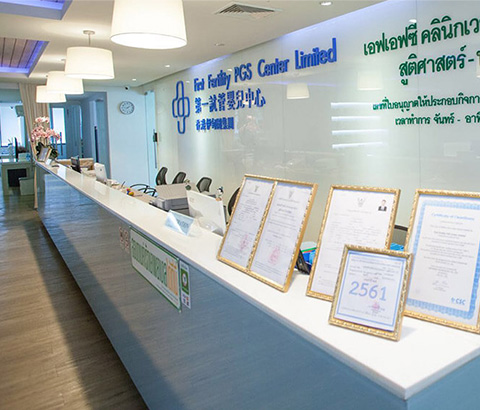In vitro fertilization (IVF) is a type of assisted reproductive technology (ART) that involves the fertilization of an egg outside of the body. The process involves retrieving eggs from a woman's ovaries and fertilizing them with sperm in a laboratory dish. Once fertilized, the resulting embryos are then transferred to the woman's uterus where they can implant and develop into a pregnancy.
IVF is typically used in cases where natural conception is not possible or has not been successful. This can include infertility due to blocked or damaged fallopian tubes, low sperm count or poor sperm motility, or unexplained infertility. IVF can also be used in cases where a woman has a medical condition that makes pregnancy risky, such as advanced maternal age or certain genetic disorders.

The IVF process typically involves several steps, including:
1. Ovarian stimulation: Medications are used to stimulate the ovaries to produce multiple eggs. This increases the chances of success during the IVF process.
2. Egg retrieval: Once the eggs are mature, they are retrieved from the ovaries using a needle guided by ultrasound.

3. Fertilization: The retrieved eggs are placed in a dish with sperm and left to fertilize. In some cases, a single sperm is injected directly into an egg in a process called intracytoplasmic sperm injection (ICSI).
4. Embryo development: The fertilized eggs are monitored for several days to ensure successful development into embryos.
5. Embryo transfer: One or more embryos are transferred to the woman's uterus using a thin catheter. Any remaining embryos may be frozen for future use.

6. Pregnancy test: About two weeks after the embryo transfer, a pregnancy test is done to determine if the IVF was successful.
IVF is generally considered safe, but like any medical procedure, it does carry some risks. These can include:
- Ovarian hyperstimulation syndrome (OHSS): This occurs when the ovaries become swollen and painful due to the stimulation medications.
- Multiple pregnancies: IVF increases the chances of having twins, triplets, or more.
- Ectopic pregnancy: This is when the embryo implants outside of the uterus, usually in the fallopian tube.
The success rates of IVF vary depending on several factors, including the woman's age, the cause of infertility, and the number of embryos transferred. According to the Centers for Disease Control and Prevention (CDC), the success rate for IVF in women under 35 is around 40%, while the success rate for women over 40 is around 4-5%.
IVF has helped many couples achieve their dream of having a child, but it is not without its risks and limitations. It is important to discuss all options with a healthcare provider and to carefully consider the physical, emotional, and financial aspects of the IVF process before making a decision.

试管婴儿感冒了能吃什么药? 试管婴儿是指通过体外受精技术(IVF)在实验室中受精并培育出来的婴儿。由于试管婴儿的免疫系统尚未完全发育,他们对感冒病毒更容易感染。当试管婴儿感冒时,父母们常常担心该给他们使用哪些药物。下面我们将详细介绍试管婴儿感冒时可以使用的药物。

试管婴儿母体症状 试管婴儿是指通过体外受精技术,在实验室中将jz与卵子结合,然后将受精卵植入母体子宫内的一种生育方式。试管婴儿母体在妊娠期间可能会出现一些症状,这些症状是由于激素水平的变化和子宫内胚胎的发育引起的。以下是一些常见的试管婴儿母体症状的详细描述。

试管婴儿胚胎着床的重要性 试管婴儿是指通过体外受精技术将受精卵培养至胚胎阶段,然后将胚胎植入母体子宫内发育成婴儿的过程。试管婴儿胚胎着床是整个过程中至关重要的一步,它决定了胚胎是否能够成功发育并最终成为一个健康的婴儿。在试管婴儿胚胎着床的过程中,饮食对胚胎

试管婴儿为什么要先进行无创测试 试管婴儿是指通过体外受精和胚胎移植技术,将受精卵培养至一定阶段后植入母体,从而实现怀孕和生育的方法。在进行试管婴儿前,医生通常会建议进行无创测试,以确保胚胎的健康和减少患有遗传疾病的风险。下面将详细解释为什么试管婴儿要先进行

试管婴儿是一种辅助生殖技术,通过将受精卵在实验室中培养成胚胎,然后将胚胎移植到母体子宫中进行妊娠。这项技术为那些无法自然受孕的夫妇提供了一种实现生育愿望的选择。选择适当的时间进行试管婴儿是非常重要的,因为它会影响到妊娠的成功率和婴儿的健康。 身体健康状况 夫

试管婴儿抹洗是什么? 试管婴儿抹洗,也称为胚胎移植,是一种辅助生殖技术,用于帮助那些无法自然怀孕的夫妇。它涉及将受精卵从体外培育的试管中移植到女性子宫内,以实现妊娠。 试管婴儿抹洗通常是在其他不孕治疗方法失败后考虑的。它可以帮助那些患有输卵管阻塞、多囊卵巢综

泰国第一试管婴儿中心位于曼谷市中心四季酒店附近,占地1500平方米,是曼谷大型的泰国试管婴儿医院专科诊所之...

泰国三美泰医院成立于1979年,是泰国同行业中出于领先地位的私立医院集团。其中的总院三美泰素逸坤医院,位于...

泰国威它尼医院是一所在泰国领军的泰国试管婴儿医院,同时面向本地和国际病患。自1994年成立以来,一直提供更...

泰国康民国际医院,泰国试管婴儿医院创立于1980年,2002年首获全亚洲第一个JCI国际医疗认证。位于泰国曼谷的核...